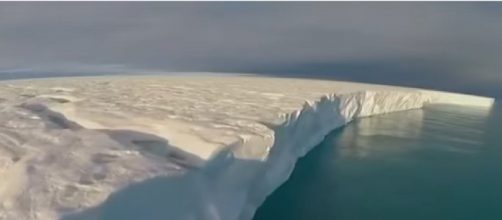A study reveals glaciers across the world are losing their mass. The study appeared in the science journal Nature. It mentions the loss of this nature from hundreds of thousands of glaciers around the world. This is a matter of concern because it translates into a major source of sea-level rise and poses a danger to those in coastal regions. Many large cities were set up in the past on the coast to ease transportation of goods and travel. These cities would now be in danger from rising sea levels, and the authorities would have to consider methods to overcome the challenge.
A news report of November 2019 said sea level rise could destroy three times more cities than predicted by 2050. Reuters says glaciers are losing mass at a fast pace. The study is based on the satellite imagery of NASA. The study did not include the Greenland and Antarctic ice sheets. The loss was in gigatonnes of ice per year, and it has been increasing from 2000 onwards. In the opinion of experts, the impact of the melt on sea levels was about 0.029 inches (0.74 millimeters) every year.
Climate change is a factor responsible for the loss of ice from glaciers
Scientists believe Climate change contributes to the melting of glaciers and is responsible for sea-level rise. They also add the loss to ice sheets in Greenland and Antarctica is less than from other glaciers.
The study aims to throw light on the subject of ice mass loss. It was a victim of climate change. Robert McNabb is co-author of the study. Reuters adds that the subject of loss of mass from glaciers is a subject that scientists have studied. It could be a result of warming temperatures driven by climate change. The consequent sea-level rise could pose a threat to the coastal cities. In August 2019, scientists mourned the loss of Okjökull glacier in Iceland.
Effect of global warming visible more on some glaciers
Researchers discovered that global warming has a greater effect on some glaciers, which they have identified. In their opinion, these glaciers are essential for the local communities because they are a source of water for them.
The melting of these glaciers could harm their lives. They could face a shortage of both food and water. Reuters quotes Robert McNabb saying,: "Those areas are seeing a rapid pace of glacier melt that could be fairly worrying." He adds that the rise in temperatures resulting from human emissions was leading to more loss of ice. Once glacial ice melts, its recovery would be a long-drawn process. The melting of the Thwaites glacier in the Antarctic led to an unimaginable rise in sea levels.
The sea levels rise when glaciers lose mass
According to Sky News, most of the glaciers are losing mass, and it gives rise to an increase in sea levels. Researchers admit the process is accelerating, and once glacial ice melts, it could take decades or centuries to regrow.
They have taken the help of images from NASA's Terra satellite covering the period between 2000 and 2019. Their observation is that the loss of ice increased with the passage of time. Twila Moon is a glaciologist at the National Snow and Ice Data Center in Colorado. She says the study highlights the fact that the world must bring global temperatures down. Several international forums discuss the subject of global warming, which is due to the generation of greenhouse gases. A solution is to promote alternatives to fossil fuels. These could be different forms of renewable energy like electricity, solar power, wind power, etcetera. Incidentally, Greenland'sGreenland's glaciers in Canada have become a new travel destination in Newfoundland and Labrador.


